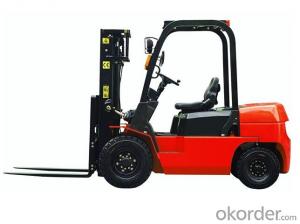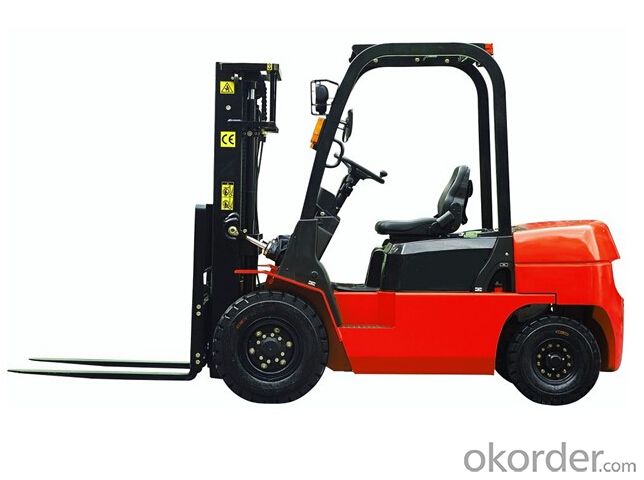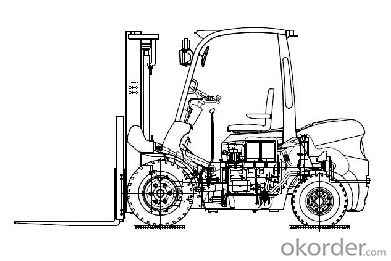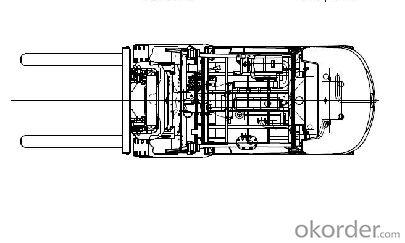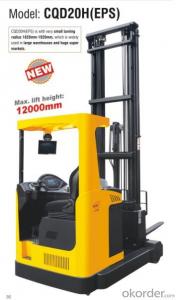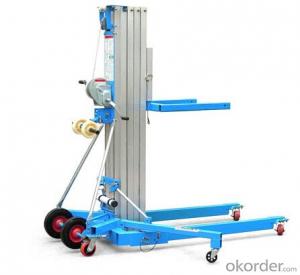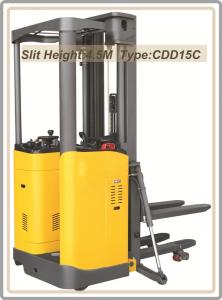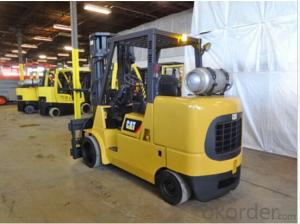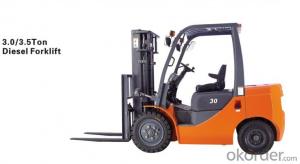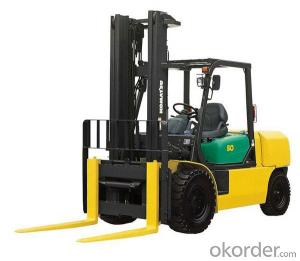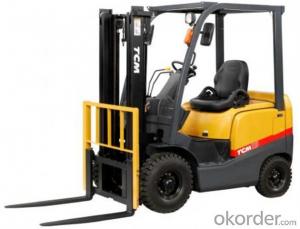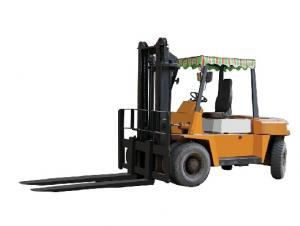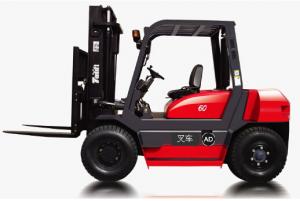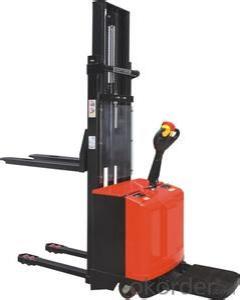1.5 Tons Battery Powered Forklift CPD 15C
- Loading Port:
- Shanghai
- Payment Terms:
- TT or LC
- Min Order Qty:
- 1 unit
- Supply Capability:
- 1 unit/month
OKorder Service Pledge
OKorder Financial Service
You Might Also Like
Forklift Description:
Electric forklifts - powered by lead-acid batteries, several types of forklifts are electric: cushion tire forklifts, scissor lifts, order pickers, stackers, reach trucks and pallet jacks. Electric forklifts are primarily used indoors on flat, even surfaces. Electric forklift batteries last 6 consecutive hours or throughout an 8-hour shift with 2-3 breaks. Batteries prevent the emission of harmful fumes and are recommended for facilities in food-processing and healthcare sectors.
Fuel cell forklifts produce no local emissions, can work for a full 8-hour shift on a single tank of hydrogen, can be refueled in 3 minutes and have a lifetime of 8–10 years. Fuel-cell-powered forklifts are often used in refrigerated warehouses as their performance is not degraded by lower temperatures.
Sideloader - comes in Stand on End Control, and Sit Down End Control, which is the most numerous. It may be electrically powered, or have an internal combustion engine. Engines may be diesel, kerosene, gasoline, natural gas, butane, or propane fueled, and may be either two stroke spark ignition, four stroke spark ignition (common), two stoke compression ignition, and four stroke compression ignition (common). North American Engines come with advanced emission control systems. Forklifts built in countries such as Iran or Russia will typically have no emission control systems. Some sideloaders have hybrid drivetrains.
Telescopic handler - comes in Stand on Center Control, and Sit Down Center Control, which is the most numerous. Usually has an Internal Combustion Engine. Engines are almost always diesel, but sometimes operate on kerosene, and sometimes use propane injection as a power boost. Some old units are two stoke compression ignition, most are four stroke compression ignition (common). North American Engines come with advanced emission control systems. Forklifts built in countries like Iran or Russia will typically have no emission control systems. Some Telescopic handlers have Hybrid drivetrains.
Walkie Order Picking truck - usually Electrically Powered
Rider Order Picking truck - commonly called an "Order Picker"; like a small Reach Truck, except the operator rides in a cage welded to the fork carriage, while wearing a specially designed safety harness to prevent falls. A special toothed grab holds the pallet to the forks. The operator hand transfers the load onto the pallet one article at a time. This is an efficient way of picking less than pallet load shipments, and is popular for use in large distribution centers.
A Raymond reach truck. Note the pantograph allowing the extension of the forks in tight aisles.
Articulated Very Narrow Aisle Counterbalanced trucks - sometimes called "Flexi or Bendi Trucks" after two of the largest manufacturers. Comes in Stand on Center Control, and Sit Down Center Control, which is the most numerous. May have an internal combustion engine or an electric motor. Electric motors are most common. Engines may be diesel, kerosene, gasoline, natural gas, butane, or propane fueled, and may be either two stroke spark ignition, four stroke spark ignition (common), two stoke compression ignition, and four stroke compression ignition (common). North American Engines come with advanced emission control systems. Forklifts built in countries such as Iran or Russia will typically have no emission control systems. Some units have hybrid drivetrains.
Forklift Specification:
Model | CPD15C | |
Load capacity kg | 1500kg | |
Load center mm | 500mm | |
Power type | Battery | |
Max.lifting speeds | 285mm/s | |
(with load)mm/s | ||
Max.Driving speeds | 12.5/14km/h | |
(with without load)km/h | ||
Max.Towing speeds | 6.5kN | |
(with load)kN | ||
Gradeability(with load)% | 15% | |
Lifting height mm | 3000mm | |
Free lift mm | 60mm | |
Tilting angles | 6/12(forward-backward) 。 | |
Min. turning radius mm | 1820mm | |
Min. right angle aisle width mm | 1810mm | |
Min. under-clearance mm | 95mm | |
Dimensions | A Overall length (inincluding fork) mm | 2960 |
B Overall width mm | 1086 | |
H Overall height(mast lowered) mm | 2115 | |
H2 Overall height(mast extend) mm | 4015 | |
H3 Overall height to overhead guard mm | 2115mm | |
B3 Fork width mm | 100mm | |
H4 Fork thickness mm | 35mm | |
A3 Fork length mm | 920(1070)mm | |
A1 Fork overhang mm | 436mm | |
A2 Wheel base mm | 1250mm | |
Tread | Front tread mm | 900mm |
Rear tread mm | 920mm | |
Tyre | Front tyre | 6.50-10mm |
Rear tyre | 5.00-8mm | |
Total weight kg | 3050 | |
Motor | Traction motor | XQ-5-4A3 |
Lifting motor | XQD-7.5-3C | |
Battery | Battery type | D-440 |
Battery voltage/Capacity V/Ah | 48/440 | |
Forklift Images:

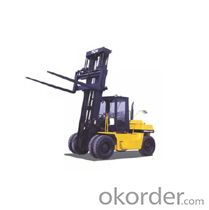
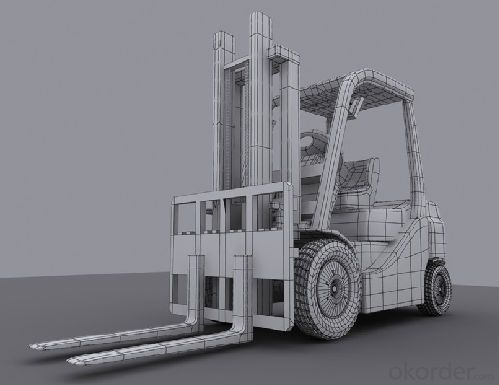
FAQ of forklift:
Q: What’s the function of forklift?
A: A forklift truck (also called a lift truck, a fork truck, or a forklift) is a powered industrial truck used to lift and move materials short distances. The forklift was developed in the early 20th century by various companies including the transmission manufacturing company Clark and the hoist company Yale & Towne Manufacturing. Following World War II the use and development of the forklift truck has greatly expanded worldwide. Forklifts have become an indispensable piece of equipment in manufacturing and warehousing operations.
Q: What’s the general operations of forklift:
A: Forklift cab with control layout.
Forklifts are rated for loads at a specified maximum weight and a specified forward center of gravity. This information is located on a nameplate provided by the manufacturer, and loads must not exceed these specifications. In many jurisdictions it is illegal to remove or tamper with the nameplate without the permission of the forklift manufacturer.
Q: What are the Forklift safety Standards?
A: 1, Forklift safety is subject to a variety of standards world wide. The most important standard is the ANSI B56—of which stewardship has now been passed from the American National Standards Institute (ANSI) to the Industrial Truck Standards Development Foundation after multi-year negotiations. ITSDF is a non-profit organization whose only purpose is the promulgation and modernization of the B56 standard.
2, Other forklift safety standards have been implemented in the United States by the Occupational Safety and Health Administration (OSHA) and in the United Kingdom by the Health and Safety Executive.
3, Driver safety: In many countries forklift truck operators must be trained and certified to operate forklift trucks. Certification may be required for each individual class of lift that an operator would use.
- Q: What are the procedures for buying a forklift?
- The forklift needs to be registered with the local quality supervision bureau. Required materials: (1) the application form for the use of special equipment (the original one); Each copy of the business license and the copy of the organization's code for the period of validity of the unit of use;
- Q: Is there a driving permit for the forklift truck?
- As long as you have a special equipment (forklift) operated by the bureau of quality supervision, you can drive a forklift truck. There is no such thing as a driving licence. We are all doing it. But one thing, the factory forklift, generally are not allowed to hit the road, because the forklift belongs to the field of motor vehicles, does not have the requirement of the road, on the road, if anything, is to deal with a special license. If you don't, you will be checked in some strict areas.
- Q: What insurance does a forklift driver need?
- Forklift truck drivers in the company, in addition to social security required by the company, also can buy a accident insurance for employees, such risk, one thousand for the company's pressure is small.
- Q: A manual forklift oil leak, what if you can't get up?
- Internal leakage (1) there is too much friction between the stem and the valve body Multiple directional control valve hoisting and tilt on the stem of each have three groove, groove and oil that can be switched on or off oil, change the way to work. Good distributing valve clearance between the valve stem and valve body is small, the spill is few, so the hydraulic cylinder down or tilt volume is small, do not affect work. But when wear clearance is too large, under the pressure of the hydraulic oil pump at work to produce, can cause work in oil or oil spill oil and the oil return tao, automatic back to the tank. The reason is mainly, because of the distributing valve use for a long time or the oil not clean accelerated wear of valve stem and valve body, such as destroy the sealing surface, lead to the oil. Repair if stem wear lighter, when to stem chrome plated finish; If the stem is worn badly, it needs to be replaced.
- Q: About the safety of driving forklifts
- Keep in mind that the goods are overloaded and don't try, or you will be fired by your boss. Insert the insertion of the teeth, the distance between the teeth, the higher the load, the lower center of the drive.Safety of the forklift should be remembered..
- Q: What information do you want to prepare for the forklift
- Process: A: there are written tests and car tests. One of them will have to relearn the make-up exam for 60 yuan. 2 families and 15 ~ 30 working days after the exam to license, which is led the vocational qualification certificate issued by the labor bureau is another technical supervision issued by the operation license for 2 year careful again. (depending on the situation, consult your local labor department.)
- Q: How does flexsim implement a forklift truck to move the product to the shelf
- Press the A button to click the staging area, hold down the mouse button, drag it to the shelf, and release the mouse button on the shelf. This completes the A connection.
- Q: What is a forklift for?
- One, model choice 1, category 1 Forklift can be divided into three categories: internal combustion forklift, electric forklift and storage forklift. (1) internal combustion forklift The internal combustion forklift is divided into regular internal combustion forklift, heavy lift truck, container forklift truck and side forklift truck. Normal internal combustion forklift Generally use diesel, gasoline, liquefied petroleum gas or natural gas engine as power, load capacity of 1.2 ~ 8.0 tons, homework channel width is generally 3.5 ~ 3.5 meters, emissions and noise into consideration, usually used in outdoor, workshops or other places with special requirements for emissions and noise did not. Due to the convenience of fuel replenishment, long time continuous work can be achieved, and can be suitable for work in bad environment (such as rain).
- Q: Who sells natural gas forklift
- Dual-fuel forklifts are exchanged for gasoline and liquefied gas or diesel and liquid gas, and the two fuels can be converted from a switch on a forklift. The liquid gas is different from natural gas, but it can be used.
- Q: What procedures are required for a forklift licence
- Are you on your way? The forklift belongs to the enterprise car, not the license plate!
Send your message to us
1.5 Tons Battery Powered Forklift CPD 15C
- Loading Port:
- Shanghai
- Payment Terms:
- TT or LC
- Min Order Qty:
- 1 unit
- Supply Capability:
- 1 unit/month
OKorder Service Pledge
OKorder Financial Service
Similar products
Hot products
Hot Searches
Related keywords
